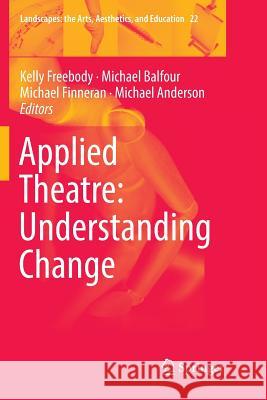Applied Theatre: Understanding Change » książka
topmenu
Applied Theatre: Understanding Change
ISBN-13: 9783030086343 / Angielski / Miękka / 2018 / 189 str.
Kategorie:
Kategorie BISAC:
Wydawca:
Springer
Seria wydawnicza:
Język:
Angielski
ISBN-13:
9783030086343
Rok wydania:
2018
Wydanie:
Softcover Repri
Numer serii:
000295144
Ilość stron:
189
Waga:
0.28 kg
Wymiary:
23.39 x 15.6 x 1.07
Oprawa:
Miękka
Wolumenów:
01
Dodatkowe informacje:
Wydanie ilustrowane











